Best Camera Setup to Capture Golf Ball Impact
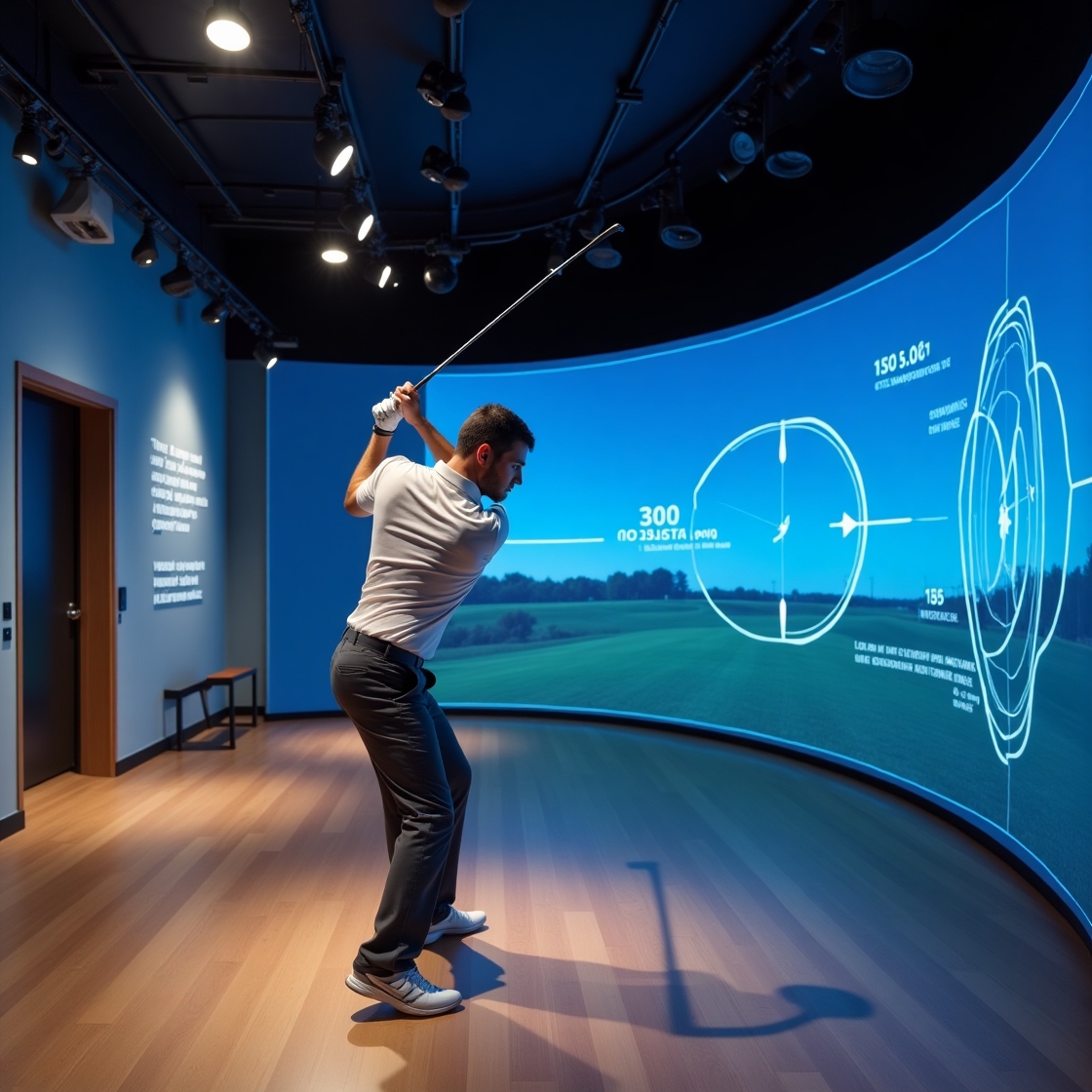
Table of Contents
Key Takeaways
- Installing best camera setup to capture golf ball impact analysis provides precise data on ball speed, spin, and trajectory, helping golfers improve their game and fix swing flaws effectively.
- Because they might be hitting a golf ball at 130 miles an hour, high-speed, slow-motion playback cameras are vital. They eliminate motion blur, providing incredibly detailed analysis of swing mechanics.
- Selecting the appropriate camera type is key to fulfilling individual goals and requirements. Whether you’re looking for swing analysis cameras for indoor simulators or launch monitor cameras for outdoor use, it pays to choose wisely!
- Advanced features like ultra high-resolution and lightning-fast shutter speed provide breathtaking imagery. Add epic lowlight performance, and you’ll be getting clear, detailed images in every training and coaching session!
- Proper installation—choosing stable mounts, cable management, settings adjustments— is key to achieving accurate, consistent performance, so be sure to keep these considerations in mind.
- Incorporating easy-to-use software tools and analytics creates better data quality and helps drive actionable feedback. These tools plug-and-play with golf simulators to facilitate real-time learning.
Selecting the proper rigging for your camera to document a golf ball impact! This is perhaps the most important decision in getting clear, high-speed footage. Choose a high-speed camera that has a minimum fps capability of 1,000. This way we can achieve the most accurate motion capture along the way.
Posture is just as important though. The most ideal position is placing the camera at ground level or slightly elevated close to the target line of the ball. A good quality tripod will help keep your camera stable while shooting, particularly if you’re filming outdoors and wind might come into play.
Lighting is a big factor; bright, natural light or supplemental LED lighting improves video quality. Using these steps, you can accurately capture and dissect every aspect of a golf ball’s collision.
Why Install Cameras for Golf Impact?
By installing camera setup to capture golf ball impact, we are giving golfers a dynamic training tool. This technology provides them with the ability to study and hone their craft to perfection. These cameras provide high level analysis into swing mechanics, ball trajectory, and spin.
Today, they are a standard tool in golf training and performance analysis.
Understand the Growing Need for Golf Analysis
The need for data-driven performance enhancement across all sports has increased tremendously, with golf at the forefront. These advanced systems are apparent on PGA tour stops, and now widely available to amateur players as well.
Intuitive and easy to use, cameras provide actionable insights that were only previously accessible to the world’s top athletes. For instance, a camera can reveal subtle differences in a swing that impact ball flight, helping players make precise adjustments.
This technology allows golfers of all skill levels to train with a new level of precision that was once unimaginable.
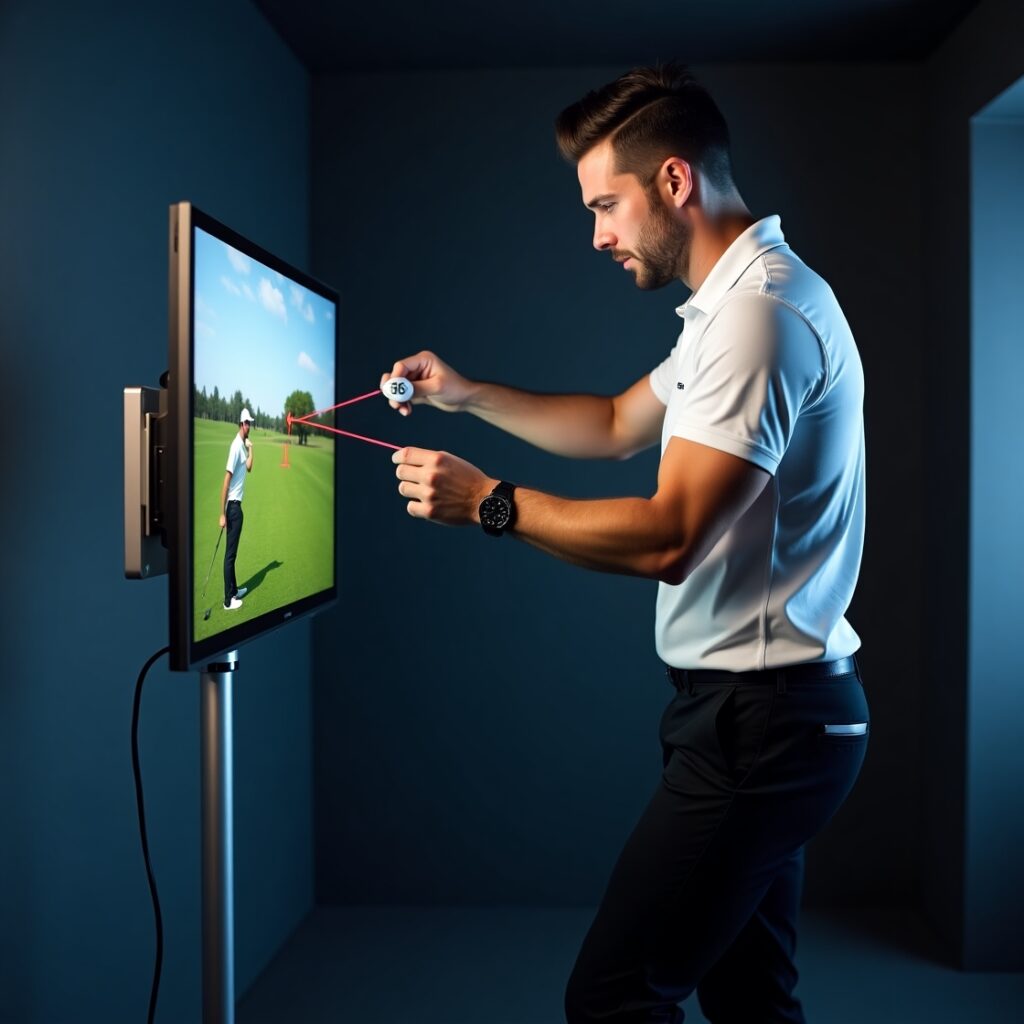
Improve Your Game with Precise Data
Data on ball speed, spin and trajectory is critical to identifying and fixing swing imperfections. Allowing golfers to effectively isolate areas of their game for practice, shots captured on camera will enable golfers to work more efficiently.
For instance, a golfer who tends to slice the ball can view their grip in slow-motion. They can look at their follow-through to know what’s going on.
This is information coaches can’t do without. They leverage it to create customized training programs that suit each player’s unique requirements, resulting in accelerated improvement and superior performance.
Capture High-Speed Motion for Better Insights
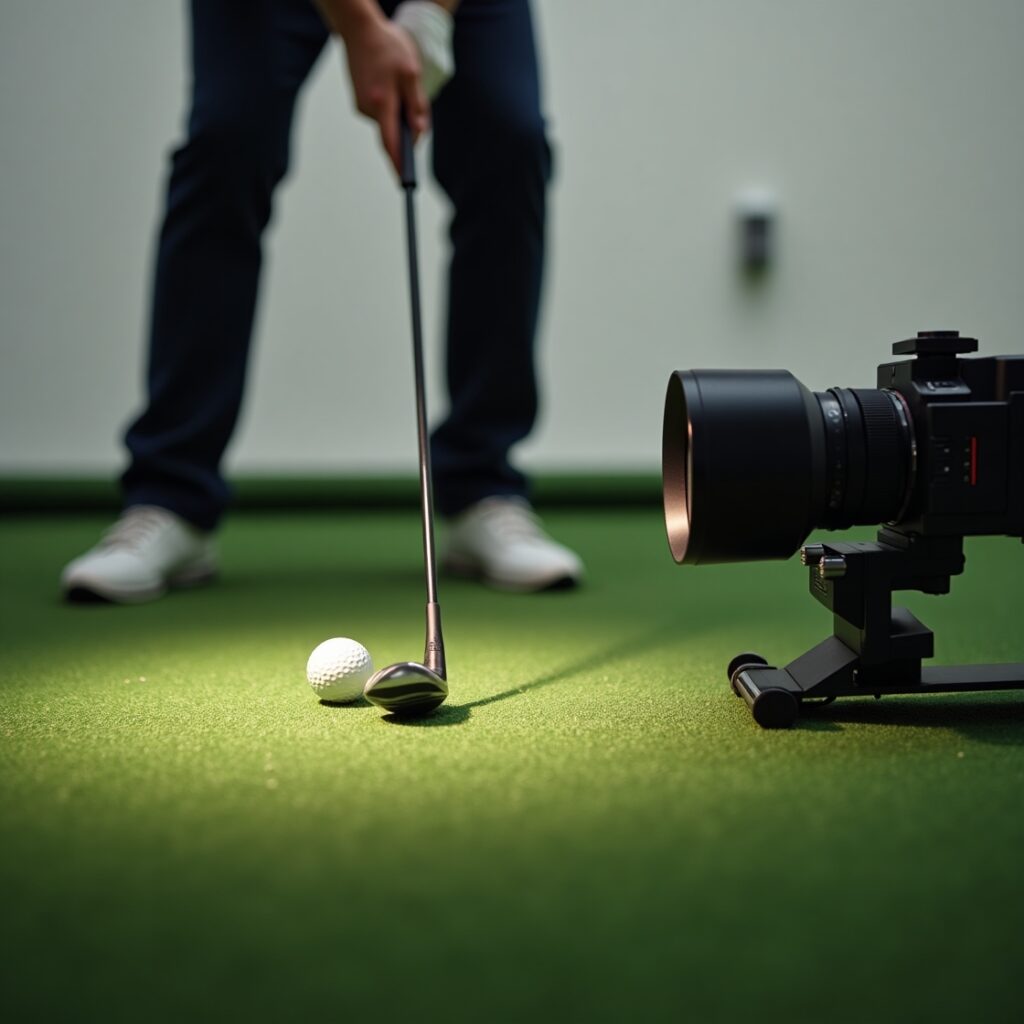
High-speed cameras really excel at capturing the fast movement of a golf swing. They particularly shine if they provide frame rates of 160 fps or better!
Slow-motion playback removes the motion blur, allowing you to analyze mechanics like clubface angle and wrist twist. High-resolution cameras, such as 1280 x 720, will really take it to the next level.
They provide clear images that bring out the smallest detail. This high level of analysis helps golfers understand how to improve their swing and measure their progress over time—even in an indoor environment.
Types of Cameras for Golf Impact
Choosing the best golf swing camera for impact analysis is crucial for achieving precise swing analysis. Each type of golf camera addresses different needs, providing unique features and benefits that make them ideal for both indoor golf simulator cameras and outdoor use. Below, we dive into each type of camera to help you determine which one is best suited for your needs, whether that’s precision or power.
Swing Analysis Cameras for Precision
These cameras shine when it comes to capturing high-quality, detailed swing mechanics, which make them perfect for advanced players who are trying to fine-tune their mechanics. High-speed models have frame rates starting at 160 fps and up. This feature provides ultra crisp slow-motion playback, magnifying even the smallest aspects of the swing sequence.
They are great at tracking the clubface angle and swing path, which gives you the information needed to make improvements that will lead to greater consistency. Cameras with interchangeable lenses, such as the 2.8MM-12MM, allow installation in various locations.
The 4K resolution ensures crystal-clear resulting images so you can easily review the golfer’s posture and ball rotation, etc. Other models achieve the optimal balance between high frame rates and resolution to prevent pixelation, delivering smooth playback without sacrificing detail.
Ceiling-Mounted Cameras for Indoor Use
Ideal for small, indoor environments, ceiling-mounted cameras are a great option for golf simulators. Their ceiling-mounted view gives an all-around bird’s-eye look at the swing, recording all the data while not interfering with the player’s natural motion.
Usually they have a compact form factor for space saving, as well as wide apertures (ex. F/1.2) for superior low-light capability. They are very stable to external interference, which makes them extremely reliable for use in permanent installations in enclosed environments.
Launch Monitor Cameras for Comprehensive Data
For more advanced users, launch monitor cameras bring together video capture with accurate data measurement. They capture essential data points such as ball speed, spin and launch angle while frequently incorporating radar technology for better precision.
High-resolution (4K or better) models render 3D ball flight paths, helping with learning for the pro game and on sports networks. Infrared LEDs help to ensure these cameras work in all lighting conditions without the need for adjustment, providing accurate results time after time.
Essential Features of Golf Impact Cameras
Understanding the specialized features that improve functionality and guarantee the ultimate post-swing analysis will help you choose the golf impact camera for your needs. Smart tech is key in delivering accurate, consistent data. It has quickly become an essential tool for golfers and instructors who want to push the envelope.
Here, we outline the key features and how they help.
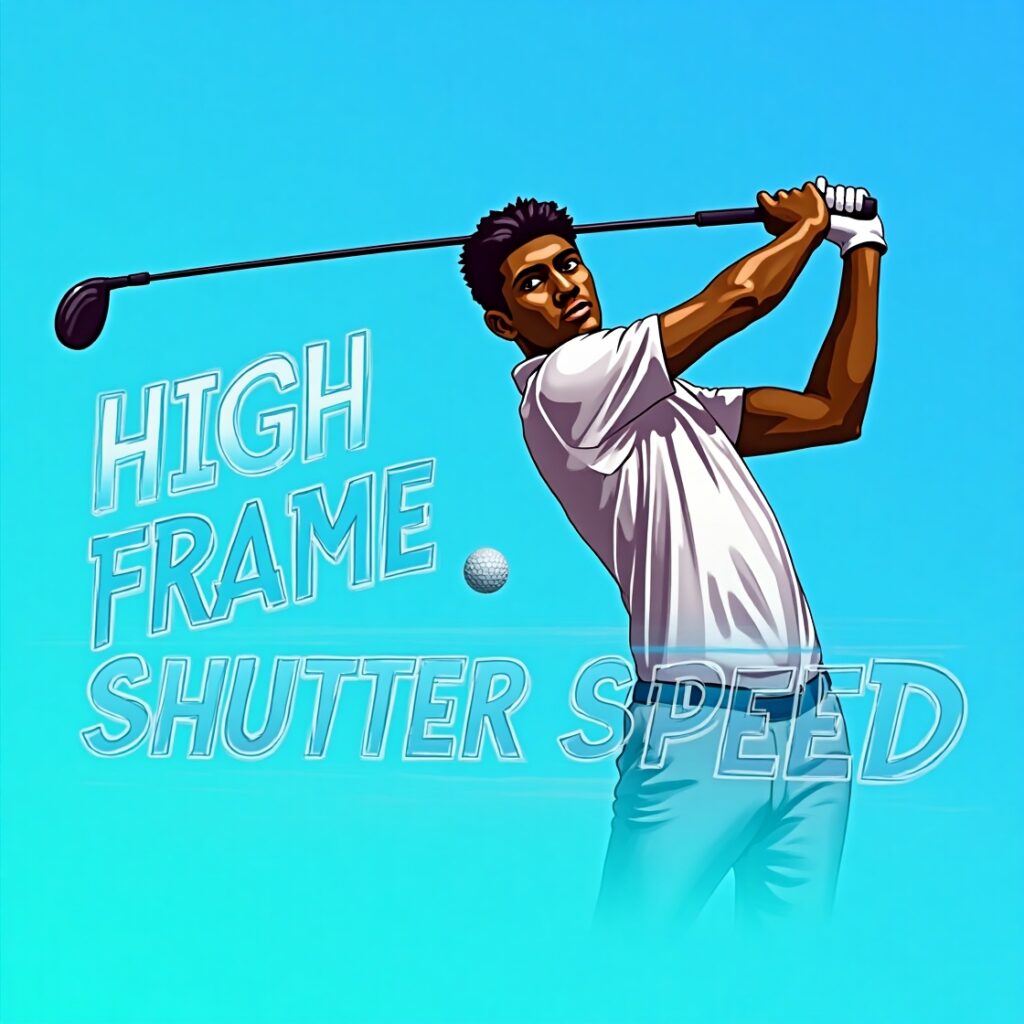
High Frame Rate for Fast Motion
That’s why a high frame rate, like 120 fps or greater, is important to clearly see fast-moving swings with no motion blur. At speeds over 100 mph, smooth video playback is important to accurately identify potential areas of improvement.
High-speed cameras, operating at up to 240 fps or even 1160 fps in advanced models, enable detailed tracking of ball flight and club head movements. This feature is extremely useful for spotting minor swing imperfections or perfecting a technique.
Optimal Shutter Speed for Clear Images
High shutter speed helps eliminate motion blur which is key for clear images at high swing speeds. This is especially critical when trying to capture specific ball impact.
A consistent shutter speed is better suited for varying ambient light levels, ensuring crisp results in bright as well as dim surroundings. Especially in low-light conditions, being able to manipulate shutter speed and ISO settings can make a world of difference.
High-Resolution Sensors for Detail
High-Resolution Sensors for Detail Resolution directly affects the quality of your swing analysis. Cameras that can shoot in 4K or higher resolution will deliver the most detail possible, making it easier to see clubface angle, ball spin, and your overall posture.
This degree of detail is most useful in high-level coaching or golf simulator environments where accuracy is critical.
Low-Light Performance for Versatility
Cameras with excellent low-light performance are essential for indoor golf simulators, or after-hours practice sessions. Wide apertures, high ISO range, and built-in infrared (IR) LEDs help maintain clarity in low-light conditions.
They provide reliable image quality, even in low light situations.
Trigger Functionality for Perfect Timing
Trigger functionality in golf swing cameras allows them to capture impact moments perfectly with swing motions, enhancing high-speed playback for detailed analysis and reducing unwanted footage.
Wide Dynamic Range for Balanced Exposure
Wide dynamic range (WDR) ensures that your camera can still provide balanced exposure, even in high-contrast lighting conditions. No matter if you’re outside or in the garage, WDR stops areas from being overexposed or underexposed.
This capability gives you a clear image and useful insight while practicing.
How to Choose the Right Camera
To freeze the impact of a golf ball, consider the right golf swing camera that meets your needs. Look beyond the newest features, compatibility, and long-term value! Whether you are a novice aiming to improve your skills or a professional analyzing conditions, the camera selection should cater to your individual requirements.
Match Camera Features to Your Needs
Prioritize features based on your goals:
- High frame rate (120 fps or greater) for high-quality, fluid motion capture.
- Resolution of at least 1080p for clear footage.
- Wide-angle lenses (2.1MM or 2.5MM)—ideal for capturing versatile, dynamic shots.
Additionally, a low aperture (like 1.2) is beneficial to shoot in low-light environments. Specialty cameras and those with interchangeable lens systems offer additional flexibility.
This flexibility allows them to shine in capturing swings from multiple angles or outdoors vs indoors. Look for intuitive designs to ensure smooth operation, which will save time and make setup easier.
Consider Indoor vs. Outdoor Use
Indoor setups generally need cameras with high sensitivity to light to make up for mixed or poor-quality lighting.
On the other hand, outdoor settings require weatherproof cameras so they can stand up to outside forces such as rain or wind.
It's important to note that outdoor lighting conditions can be very different from indoor use. Therefore, get a camera that’s good for outdoor sunny conditions and indoor low-light situations!
Cameras that are equally adept in both environments can be a cost-saver and make your camera load-out less complicated.
Assess Budget and Long-Term Value
Finding the right balance of cost vs. Performance is key. The table below compares key options:
| Price Range | Features | Best For |
|---|---|---|
| $200-$500 | Basic resolution, limited fps | Beginners, casual use |
| $500-$1,000 | High fps, 1080p+, wide lens | Intermediate players |
| $1,000+ | Advanced fps/resolution, durable | Professionals, long-term |
Quality costs more upfront, but it pays off with longevity, superior footage, and a measurable return on investment as your skill level increases.
In addition, a high-speed camera with USB connectivity provides convenient and easy data transfer that significantly increases productivity.
Step-by-Step Installation Guide
Installing a high-speed golf swing camera to record the moment a golf ball strikes the clubface is an intense exercise in precision and forethought. The right camera setup allows for precise tracking, unobstructed visuals, and reliable data collection, ensuring the best possible results for analyzing your swing motion.
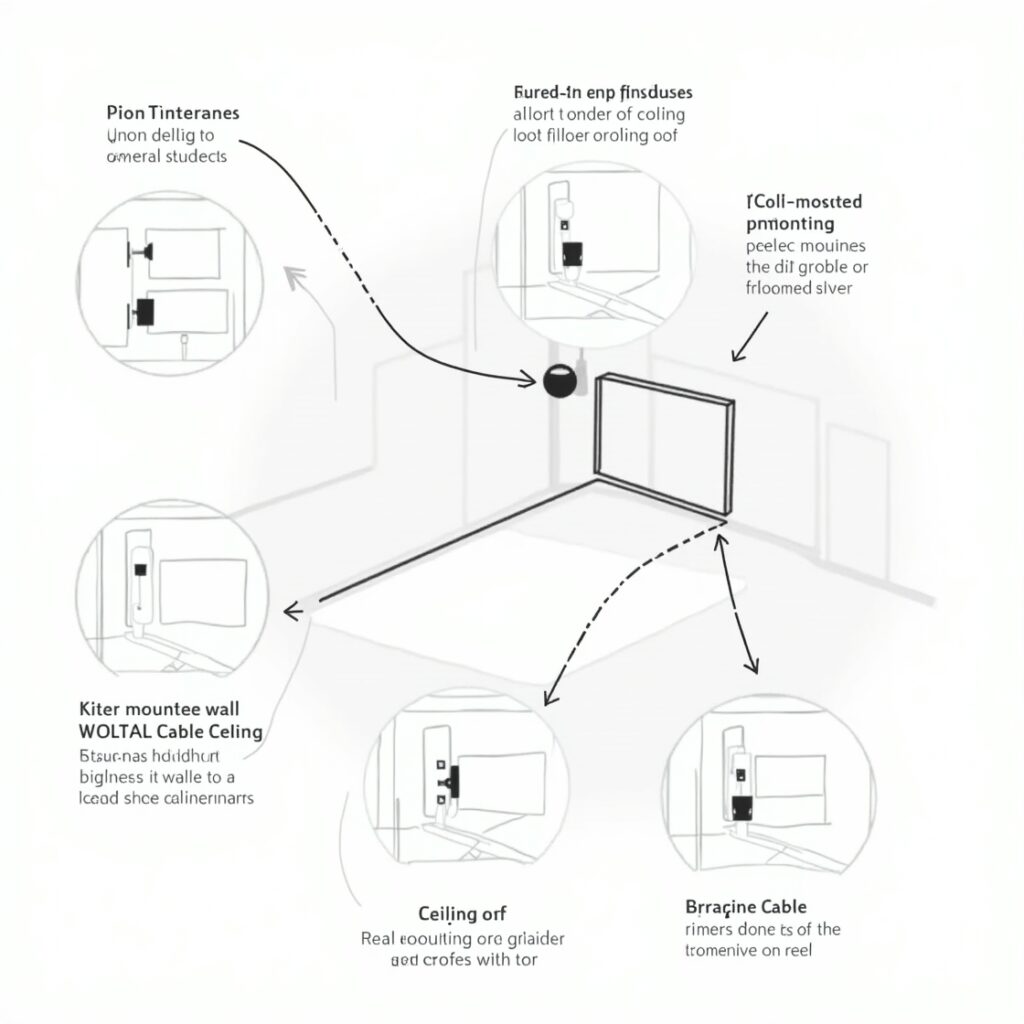
1. Select the Ideal Location
Choosing the right spot is critical. Consider these factors:
- Unobstructed views: Ensure the camera has a clear line of sight to the ball's impact zone.
- Lighting: Use brightness of at least 3,000 lumens to avoid shadows.
- Background clarity: Avoid cluttered or overly reflective surfaces behind the ball.
- Stable surfaces: Place the camera on a vibration-free surface to maintain focus.
For indoor installations, a room with a ceiling height of 9 ft is recommended. The minimum recommended floor space for a secure installation is 10×15 feet.
2. Choose the Right Mounting Equipment
Stability is key to a successful installation. Tripods offer versatility, but ceiling mounts are ideal for a fixed angle. In more confined areas, wall brackets may be suitable.
Adjustable mounts allow flexibility in positioning, ensuring the camera captures the ball's full trajectory.
3. Secure the Camera for Stability
To stop any camera movement, incorporate vibration dampeners or a weighted base. This will guarantee that you have the clearest images possible, particularly important when recording high-speed crash test impacts.
Be sure to frequently scan the installation to ensure that it is stable and secure while in use.
4. Connect Power and Data Cables
Plug the camera directly into a USB3 port to provide enough data speed (at least 700 fps minimum). Route cables carefully so they don’t become tangled or a tripping hazard.
In demanding applications, employ power backups to ensure continuous operation.
5. Adjust Camera Settings for Optimal Performance
Adjust these options so your results are crisp and clear. Set the gain to 8.00, exposure time to 299 us, and shutter speed to 300 ms.
Change ISO and frame rate accordingly, testing under actual conditions to achieve the best results.
6. Test and Fine-Tune the Setup
Don’t go full steam ahead until everything has been tested thoroughly. Correct problems, such as depth of field or exposure variations.
Fine-tune settings, making sure to check camera orientation and confirm the data being captured is correct. Reactions and suggestions from test runs can lead to additional refinements.
Optimizing Camera Settings for Golf Impact
Here’s how to optimize your golf swing camera settings to get the most accurate and actionable data from your golf impact. Whether you're analyzing performance with golf simulator cameras or outdoors, optimizing your camera ensures clarity, accuracy, and valuable insights for improvement.
Set Shutter Speed and Frame Rate Correctly
Finding the right balance between shutter speed and frame rate is key for capturing quick golf impacts. A higher frame rate, like 120 fps or greater, will work best for slow-motion playback. Such footage permits close examination of clubface direction, ball spin and player posture.
You may experience flickering in post if you set your frame rates too high. This is especially true when they go above the projector’s frame rate in a simulator environment. Usually, experimentation is the only way to determine the correct combination.
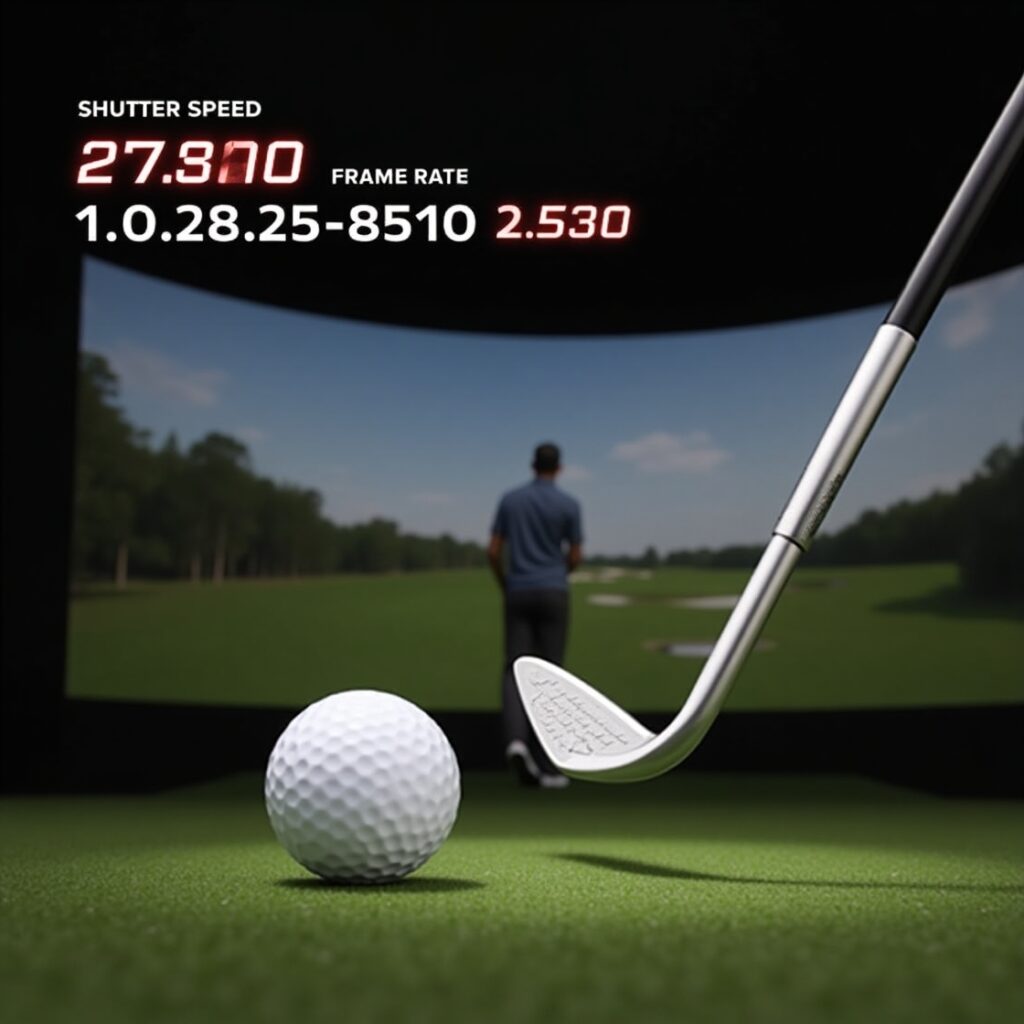
While a quicker shutter speed will help to eliminate motion blur, it will create a darker image. This interplay provides sharp images, particularly for swing speeds over 100 mph, where clarity is paramount.
Adjust ISO for Lighting Conditions
ISO settings control levels of brightness and image noise, which is essential in low-light or bright environments. In bright, outdoor conditions, using low ISO values will help you maintain crisp images.
On the other hand, situations with indoor simulators often require elevated ISO levels to get proper exposure. On the downside, cranking up your ISO can add image noise, or graininess, that can negatively affect image quality.
Using a wide-angle lens with a low aperture (1.2 for example) can help in low-light situations by letting more light in. Adjust ISO for lighting conditions. Finding the proper ISO balance will keep your subject clear and maintain necessary detail in even the brightest light.
Synchronize Triggers with Ball Impact
Understanding how synchronizing triggers down to the ball impact moment is essential in getting the shot needed. Whether you sync triggers manually or through software automation, you never want to risk missing out on the most critical data.
Software tools are available to help automate this process, providing a more precise, consistent, and repeatable timing. Properly synchronized triggers will greatly improve impact analysis, giving you a deeper understanding of ball flight and swing mechanics.
Overcoming Challenges in Outdoor Installations
Netting or a different type of deflector was critical for outdoor golf simulator cameras, especially with the need to capture the high-speed impact of a golf ball strike. Handling these challenges correctly leads to a level of performance, longevity, and quality that is hard to match, particularly when using high resolution golf swing cameras. Here are some important things to take into account.
Weatherproofing Your Camera Setup
Installation sites with both indoor and outdoor components put cameras in the path of moisture, dirt, debris, and temperature extremes. Protective enclosures protect sensitive hardware from moisture, dust, and other debris.
Protect cables and connectors with waterproofing. As an example, IP67-rated enclosures protect against water and dust ingress, greatly increasing a camera’s lifespan. This includes routine maintenance like cleaning lenses and inspecting seals, which is key to keeping things functional when the weather gets rough.
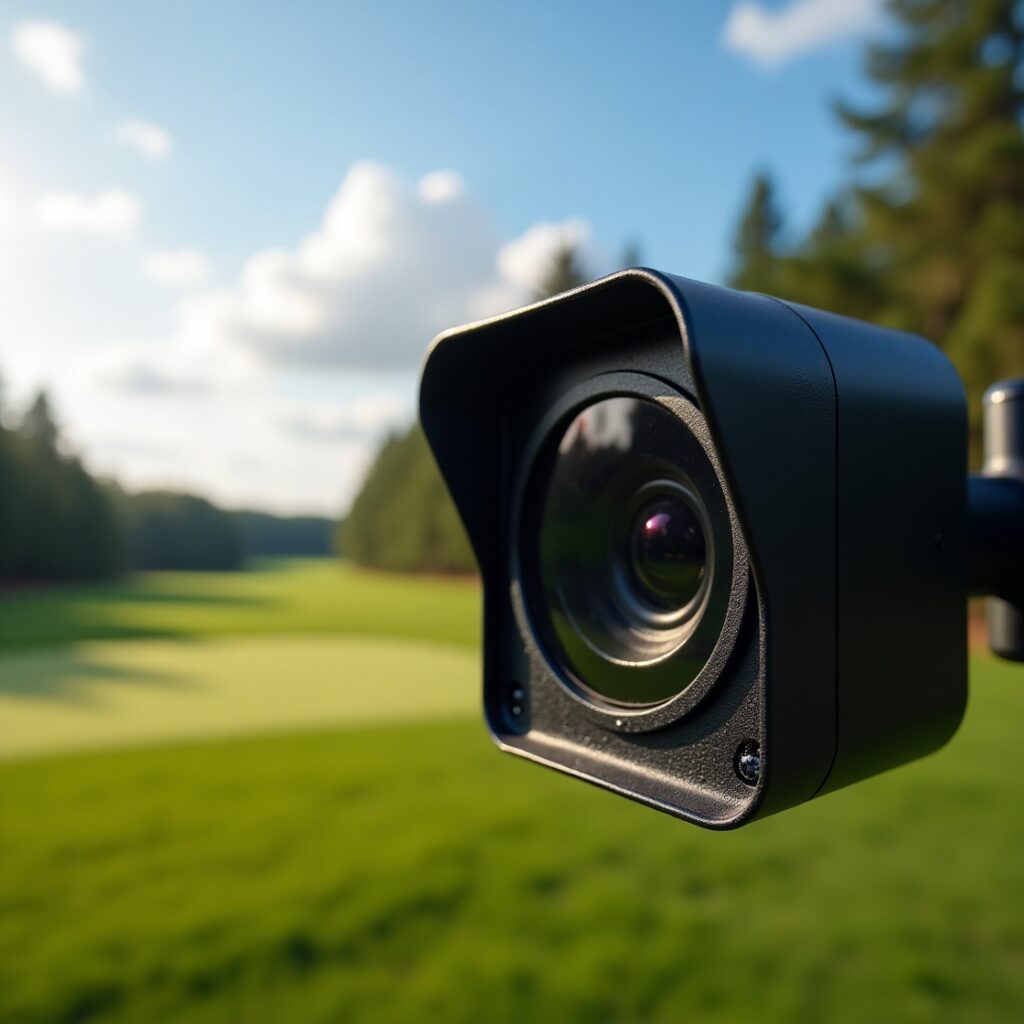
Managing Lighting Variations Outdoors
Light variation outdoors—direct sun, an overcast day, or evening shadows—can create dramatic changes in image quality. Cameras featuring wide dynamic range (WDR) technology compensate for these light changes, so that clear footage is captured continuously.
Filters such as polarizers minimize glare on brightly lit days, and being able to control camera settings manually aids in exposure adjustment. That’s why testing in various lighting environments is key. For instance, we’ve found that achieving 300 lux of light in the hitting zone improves visibility and accuracy, which is particularly important for an installation.
Ensuring Stability Against Wind and Vibration
Without proper protection, wind and vibrations could threaten outdoor installations, severely affecting camera stability and resulting image clarity. Additionally, heavy-duty mounts, stabilizers, or vibration dampeners are used to minimize movement.
For example, tripod mounts with weighted bases offer extra stability in windy weather. Frequent inspection for loose connections or general wear-and-tear will prevent issues and maintain stability. Correct Z-axis alignment, ideally 7-9 feet away from the tee, ensures even more precise footage.
Planning for Environmental Factors
Temperature, humidity, and spatial considerations are important. Equipment is happiest in the 60-70°F range, not too hot and not too cold.
Installations need 15+ feet of space for full-swing setups. Routine battery maintenance, including recharging batteries every 2-3 months, alleviates power concerns.
Enhancing Impact Analysis with Software
The combination of software and camera systems takes golf swing analysis to the next level, revealing essential performance tips. Specialized software automates the analysis of the high-frame-rate footage, turning terabytes of raw data into easily understood, actionable feedback. With a 160 fps camera and post-processing software, the most minute details of a golf swing can be analyzed.
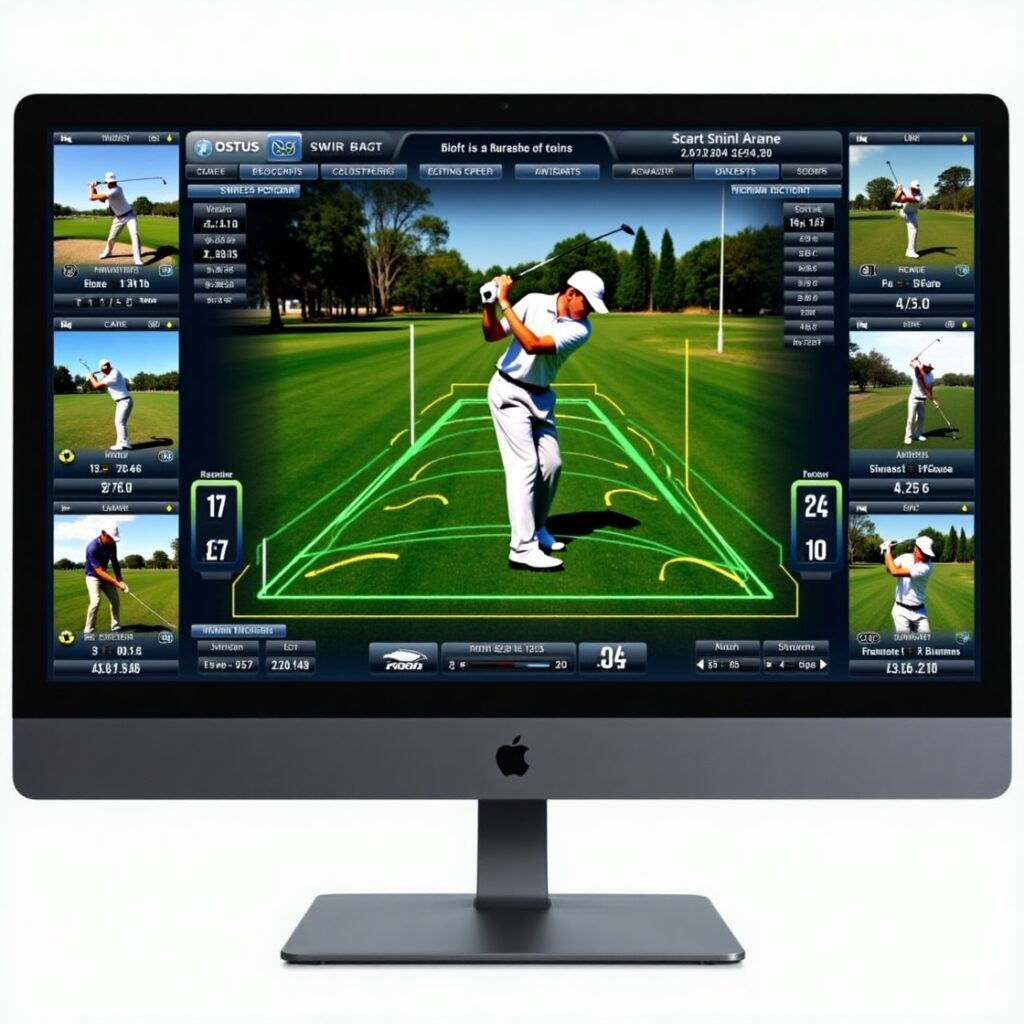
It carefully examines every aspect of the shot, from impact to follow-through. Software that is IR imaging capable brings detail and definition in complete darkness. This feature allows players to review swings at dawn or in indoor batting facilities.
Use Post-Processing Tools for Clearer Insights
Using post-processing software improves video quality, allowing swing analysis to be more precise and effective. Post-processing editing tools edit out a lot of the noise, increase brightness, and create a captivating visual, particularly when using high-quality cameras such as 4K.
Take slow-motion footage for instance, which can help to highlight complex wrist actions or club positions that may not be visible in full-time. Tools such as motion tracking take that clarity a step further by identifying and isolating the most important swing elements.
Robust software produces more accurate results, especially for analyses where videos shot from different angles need to be compared.
Leverage Analytics to Track Performance Metrics
Analytics software gives you hard data that’s completely measurable, whether it be ball speed, spin rate, or launch angle. These metrics provide valuable, actionable feedback that can be used to improve performance techniques.
To illustrate, in data visualization tools you can see trends over time as changes in position or grip lead to better results. Continual review of these analytics allows athletes to monitor their improvement and hone their craft in a deliberate way, leading to continued growth over time.
Integrate with Golf Simulators for Real-Time Feedback
Pairing these cameras with golf simulators creates a highly immersive training experience. This is a game-changing approach. Real-time feedback—like instant swing analysis—speeds up the learning process by correcting mistakes in real time.
Simulators further recreate real-world scenarios, allowing students to train in different environments. An equally important consideration is compatibility between cameras and simulators. For instance, varifocal lenses such as 2.8MM-12MM improve system integration and allow you to capture the best swing details for accurate analysis.
Safety, Legal, and Privacy Considerations
To effectively capture the impact of a golf ball, setting up a golf swing camera with careful planning is essential. This setup must address safety, legal, and privacy concerns, ensuring that your equipment remains secure. By adhering to these considerations, you can utilize high resolution golf cameras ethically while complying with local regulations.
Respect Privacy on Golf Courses
Getting consent prior to recording is not just a good idea, but a legal obligation—especially in a shared space such as golf courses. Having clear and visible signage where cameras are located makes it abundantly clear to players and staff that they are using their rights.
Where you position cameras is just as big of a consideration. Don’t put cameras in spaces where people have a reasonable expectation of privacy, such as changing rooms or restrooms. These locations may inadvertently record sensitive activities and subject individuals to privacy law violations.
Open lines of communication with golf course management builds trust and helps make sure your research is in line with their policies. For example, in California, it is illegal to use hidden cameras in private areas without consent, requiring transparency and respect for privacy.
Ensure Compliance with Local Regulations
Know your local laws on recording. Recording without someone’s consent can land you in legal trouble. In the U.S., regulations vary greatly by state, particularly around obtaining consent for audio recording.
States such as Florida have all-party consent laws for audio recordings, while some allow one-party consent. In the same vein, the UK’s Data Protection Act 2018 works in tandem with GDPR to reinforce responsible data handling and usage.
Compliance might include getting necessary permits to install cameras. For example, in Australia, entities with revenue above AUD 3 million per year are required to follow the Privacy Act 1988. Understanding and adapting to ever-evolving regulations will keep you from running into legal trouble.
Safeguard Equipment from Unauthorized Access
Being smart about camera or equipment protection is crucial. Protecting cameras from theft or damage is important. Locked mounts, physical locks, and weatherproof enclosures provide a level of physical security.
Password protection and encryption help protect stored data from being accessed by unauthorized individuals. Camera and sensor monitoring systems can help increase security even further with real-time notifications in the event of tampering.
Using cloud-based storage automatically protects data even if equipment is lost, providing an additional layer of peace of mind.
Conclusion
Installing a camera to capture the impact of a golf ball ensures that you get the most accurate and beneficial analysis of your game. When you are able to capture high quality footage, the difference is night and day. Make sure to utilize software to analyze the footage! Whether you’re a coach, a player, or just someone interested in the physics of a perfect swing, a properly installed camera is a must. It allows you to zoom in and focus on the nuances that make a difference.
Invest the time into planning your setup, choosing the best location, and optimizing camera settings. With a small amount of effort up front, you’re rewarded with some straight forward, actionable insights. Looking to improve your game on the course? From the right equipment to maximizing each shot, here’s how you can get started.
Frequently Asked Questions
Why should I install a camera to capture the impact of a golf ball?
Setting up a golf swing camera gives you the opportunity to review your swing, ball speed, and ball trajectory. It’s ideal for taking your game to the next level, correcting mistakes, and measuring improvement. Not to mention, it’s amazing for post-round analysis to help improve your overall golfing experience.
What type of camera is best for capturing golf ball impacts?
High-speed golf swing cameras with a high frame rate (minimum 240 fps) are recommended. They shoot incredibly crisp images of impact and ball flight, even at 1000 fps+ speeds. If you plan to use them on the course as well, look for weatherproof, outdoor-rated golf cameras.
Can I use a regular camera for golf impact recording?
Can I use a regular camera to record golf impact? For in-depth impact analysis, high-speed cameras, like golf swing cameras designed for sports, are more appropriate.
How do I install a camera for golf impact recording?
Install the golf swing camera at waist level, tilted down at an angle towards where the ball will be. Attach it to a stable tripod or mount to ensure quality image capture. Be sure you’re safe from potential ball impact and that it’s powered/charged in advance of your use.
What settings should I optimize on the camera for golf impact?
Set the golf swing camera to a high frame rate (240 fps or higher at minimum) and adjust the shutter speed to ensure clarity and proper lighting for capturing clean footage. Record test footage to assess framing and exposure for your golf videos.
Are there any legal or privacy concerns when using cameras outdoors?
Short answer yes, do not film other individuals without their permission. Be aware of any legal or privacy concerns by ensuring your golf swing camera angles are directed solely at the activity you are engaged in.
What software can enhance golf impact analysis?
Tools like Swing Catalyst, V1 Sports, or Kinovea, along with high-resolution golf swing cameras, allow us to track swing mechanics, analyze ball flight, and view impact detailed in slow motion. These research-based tools provide valuable insights to perfect your technique.
This article contains affiliate links. If you purchase through them, I may earn a small commission at no extra cost to you. See our Affiliate Disclosure.

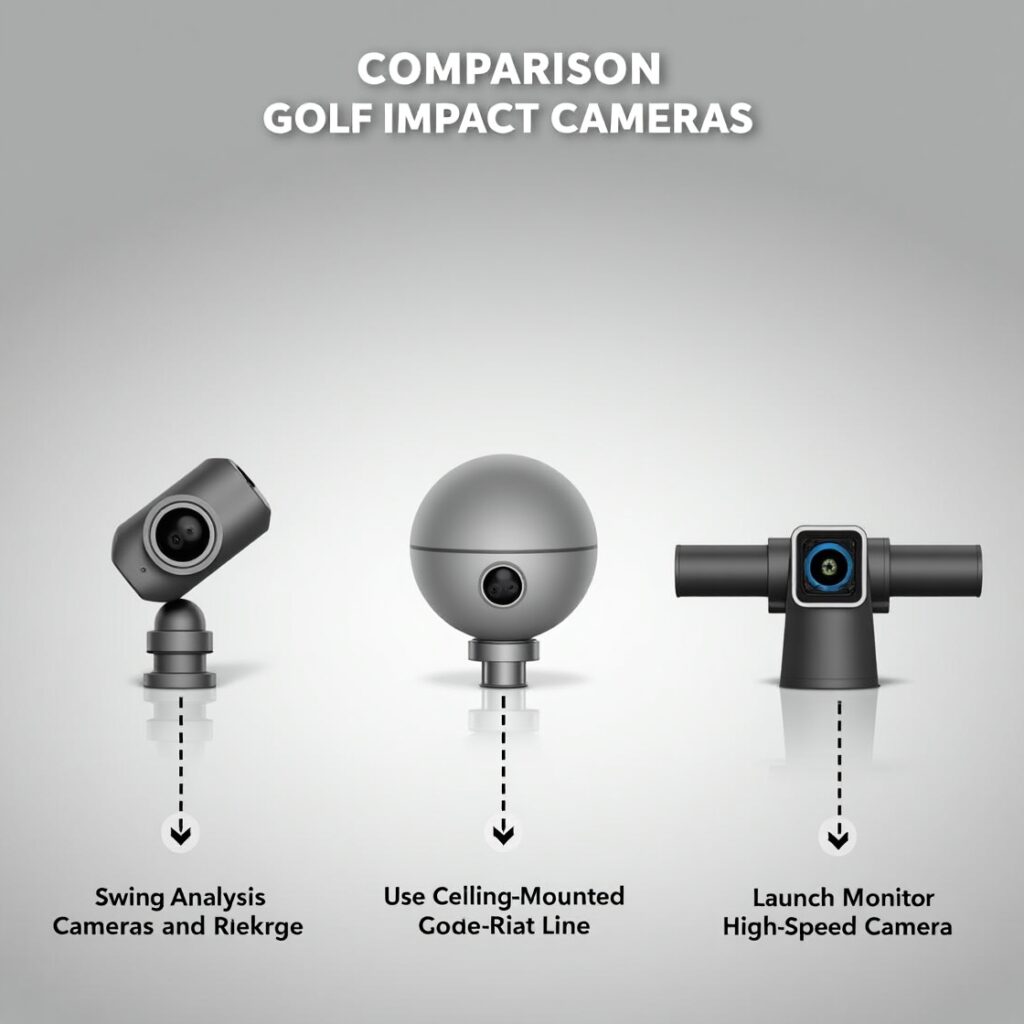
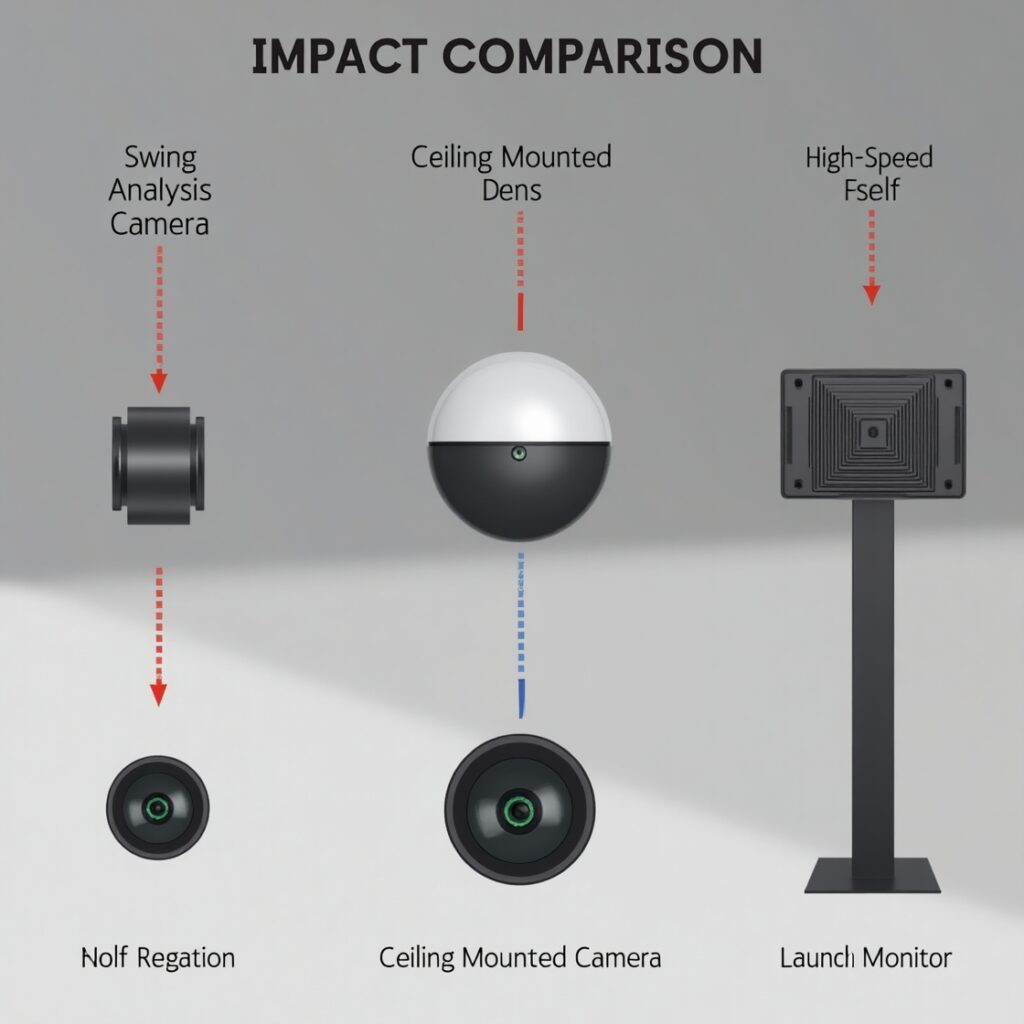
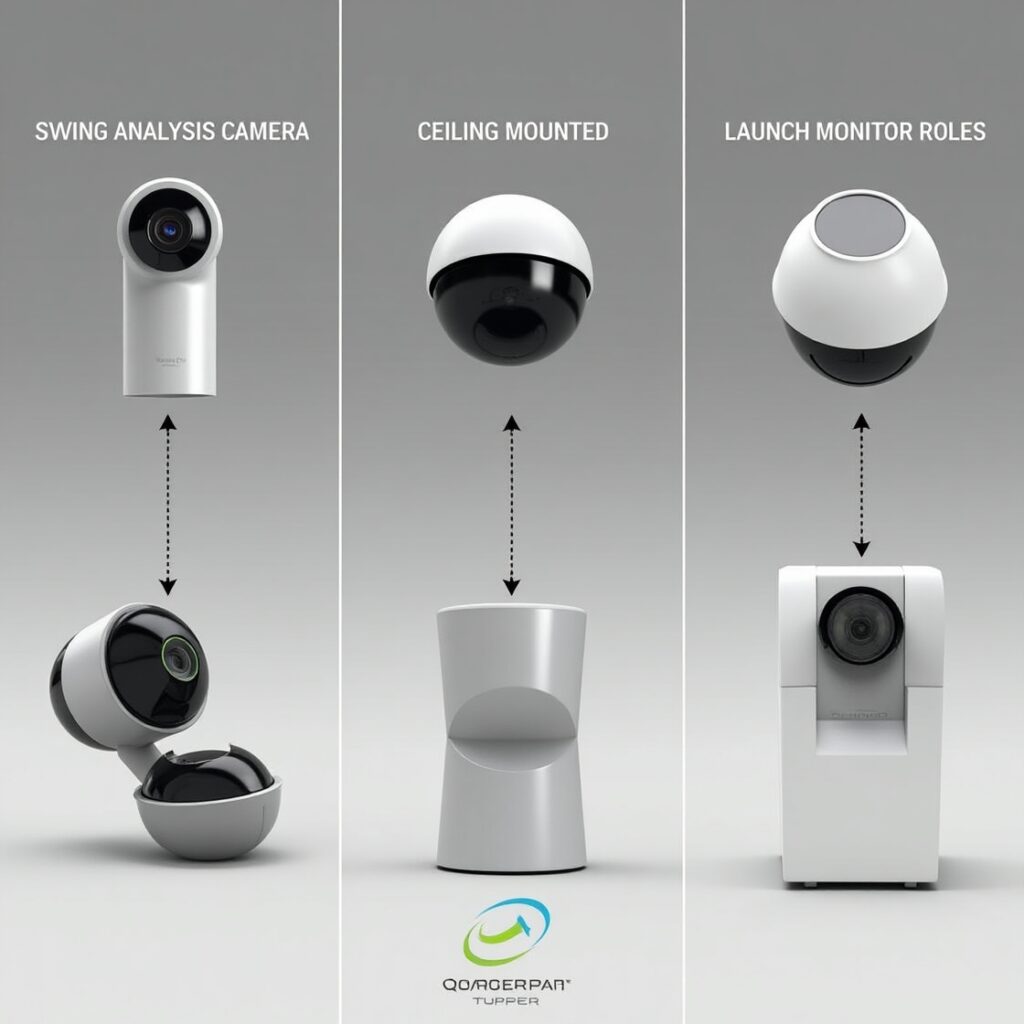



![10 Best Golf Balls for Beginners [Easy Distance + Forgiveness] 15 best golf balls for beginners](https://golfprotips.com/wp-content/uploads/2025/05/best-golf-balls-for-beginners-1-768x768.jpg)